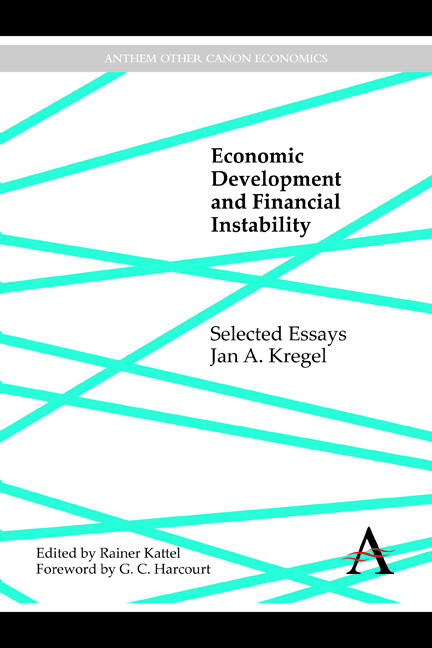Book contents
- Frontmatter
- Contents
- Foreword
- Publication History
- I Theoretical Discussions
- II Finance for Development
- III The Crisis in the US and the EU
- 16 Alternative Economic Analyses of German Monetary and Economic Unification: Monetarist and Post Keynesian
- 17 Currency Stabilization through Full Employment: Can EMU Combine Price Stability with Employment and Income Growth?
- 18 Minsky's “Cushions of Safety,” Systemic Risk and the Crisis in the Subprime Mortgage Market
- 19 Why Don't the Bailouts Work? Design of a New Financial System versus a Return to Normalcy
- 20 Is This the Minsky Moment for Reform of Financial Regulation?
- 21 Debtors' Crisis or Creditors' Crisis? Who Pays for the European Sovereign and Subprime Mortgage Losses?
- 22 Six Lessons from the Euro Crisis
- 23 Minsky and the Narrow Banking Proposal: No Solution for Financial Reform
- Index
18 - Minsky's “Cushions of Safety,” Systemic Risk and the Crisis in the Subprime Mortgage Market
from III - The Crisis in the US and the EU
Published online by Cambridge University Press: 05 November 2014
- Frontmatter
- Contents
- Foreword
- Publication History
- I Theoretical Discussions
- II Finance for Development
- III The Crisis in the US and the EU
- 16 Alternative Economic Analyses of German Monetary and Economic Unification: Monetarist and Post Keynesian
- 17 Currency Stabilization through Full Employment: Can EMU Combine Price Stability with Employment and Income Growth?
- 18 Minsky's “Cushions of Safety,” Systemic Risk and the Crisis in the Subprime Mortgage Market
- 19 Why Don't the Bailouts Work? Design of a New Financial System versus a Return to Normalcy
- 20 Is This the Minsky Moment for Reform of Financial Regulation?
- 21 Debtors' Crisis or Creditors' Crisis? Who Pays for the European Sovereign and Subprime Mortgage Losses?
- 22 Six Lessons from the Euro Crisis
- 23 Minsky and the Narrow Banking Proposal: No Solution for Financial Reform
- Index
Summary
Minsky Redux
Many commentators have noted the relevance of Hyman P. Minsky's financial fragility hypothesis to understanding the current crisis in the financial systems of developed countries. Indeed, Minsky has recently appeared in the pages of traditional financial media such as the Economist, the Wall Street Journal, and the Financial Times. He is often described as the “obscure economist” who identified highly speculative “Ponzi finance” as an underlying factor in such crises. But Ponzi finance is not the most important contribution Minsky has made to our understanding of the logic of repeated financial crises under capitalism. His analysis was based on the idea of endogenous instability—that stability in the economic system generates behaviors that produce fragility, and increasing fragility makes the system more prone to an unstable response to change in financial or other conditions that are relevant to the return on investment projects. Minsky expressed this idea in terms of a declining “margin” or “cushion” of safety in financial transactions and an increase in financial leverage that he called “layering.” However, the current crisis differs in important respects from the traditional analysis of a Minsky crisis. These differences have had a significant impact on the way the crisis has evolved.
- Type
- Chapter
- Information
- Economic Development and Financial InstabilitySelected Essays, pp. 281 - 296Publisher: Anthem PressPrint publication year: 2014



